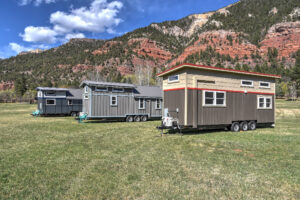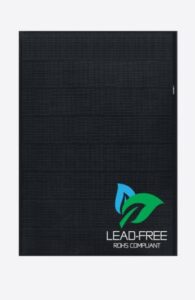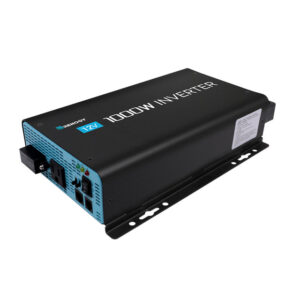
Harvesting the Sun: The Power of Integrated REC Solar Panels
Imagine a world where your electricity bill shrinks dramatically, where your home runs on the clean, pure energy of the sun. It’s not just a dream. Integrated REC solar panels are turning this vision into reality for homeowners across the globe. These panels aren’t just solar solutions; they’re a leap forward in harnessing sunlight efficiently. Let’s explore why they’re making waves in the world of renewable energy.
Key Takeaways
-
Integrated REC solar panels are a top-tier choice for reducing electricity costs and carbon footprints.
-
REC’s advanced technology offers higher efficiency rates compared to many conventional panels.
-
Durability and performance in diverse climates make REC panels versatile for various installations.
-
The innovative design of REC panels ensures maximum energy harvest from the sun.
-
Investing in REC solar panels is a step toward sustainable living and energy independence.
Why REC Panels Are a Game-Changer
When we talk about solar panels, REC panels stand out for their ability to do more with less. They’ve mastered the art of efficient sunlight harnessing, meaning they convert more sunlight into electricity than many of their peers. This isn’t just good for the planet; it’s great for your wallet too. With REC panels, you can expect a significant drop in your energy bills, and who doesn’t love saving money?
But efficiency is just the start. These panels are built tough. They’re designed to withstand the harshest weather conditions, from scorching heat to icy hail. This resilience means a long life for your panels and peace of mind for you. Plus, REC’s commitment to sustainability means you’re part of a greener future with every kilowatt-hour you generate.
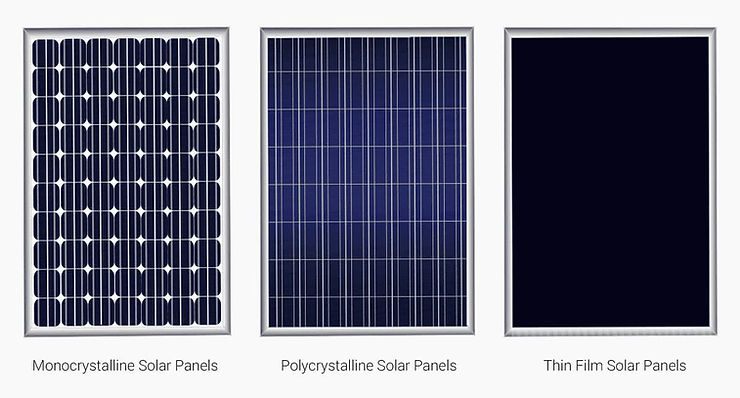
Understanding the Solar Panel Landscape
The solar panel market is buzzing with options, each promising to light up your life. But it’s not just about choosing any panel; it’s about finding the right fit for your needs. Solar panels come in various shapes, sizes, and technologies, and understanding these differences is key to making an informed decision.
As you navigate this landscape, you’ll encounter terms like ‘monocrystalline,’ ‘polycrystalline,’ and ‘thin-film’ – each a different type of solar panel with its own set of characteristics. Monocrystalline panels, for instance, are known for high efficiency and sleek looks, while polycrystalline panels are often more budget-friendly.
And then there’s the exciting world of integrated solar solutions. These are not just panels; they’re complete systems designed to work seamlessly with your home. They’re about smart energy use, not just energy production. This is where REC solar panels shine, offering a blend of performance, aesthetics, and ease of use that’s hard to beat.
Conventional vs. Integrated Solar Solutions
So, what’s the difference between conventional and integrated solar solutions? Think of it like this: conventional solar panels are like the individual instruments in an orchestra, each playing its part. Integrated solar solutions, on the other hand, are the entire symphony – everything working in harmony to create something beautiful.
With conventional panels, you might face the hassle of mismatched components or complex installations. Integrated solutions, like REC’s solar panels, take the guesswork out. They come with all the necessary parts designed to work together flawlessly, ensuring you get the most out of every ray of sunshine.
It’s about more than just convenience; it’s about performance. Integrated systems are optimized for efficiency, meaning you’ll see better results from the same amount of sunlight. And when it comes to solar, efficiency is everything.
The Evolution of Solar Panel Tech
Solar technology has come a long way since its early days. We’ve seen it evolve from a niche option for the environmentally conscious to a mainstream energy solution. This journey has been marked by constant innovation, with each advancement bringing us closer to a cleaner, more sustainable future.
Early solar panels were a far cry from today’s sleek, high-performing models. They were less efficient and more expensive, making them a tough sell for the average homeowner. But as technology improved, so did the panels. We’ve seen leaps in efficiency, drops in cost, and a growing awareness of the benefits of solar energy.
REC has been at the forefront of this evolution. They’ve pushed the boundaries of what’s possible, introducing cutting-edge technologies like Heterojunction Technology (HJT) and advanced materials that capture more sunlight and convert it into electricity more effectively. It’s this spirit of innovation that has made REC a leader in efficient sunlight harnessing.
Nuts and Bolts: The Anatomy of REC Solar Panels
Let’s peel back the layers of REC solar panels to see what makes them tick. It’s not just about slapping some silicon cells onto a panel and calling it a day. There’s a science to it, a meticulous design that’s the result of years of research and development. These panels are a marvel of engineering, crafted to capture the sun’s power with maximum efficiency.
Innovative Design Features
-
Half-cut cell technology: By splitting the solar cells in half, REC panels reduce electrical resistance, which means more power for you.
-
Twin panel design: This clever layout separates the panel into two twin sections, ensuring that if one part is shaded, the other still works at full throttle.
-
Frame strength: A robust frame design means these panels can take on heavy loads, be it a blanket of snow or a gusty day.
-
Anti-reflective coating: Every drop of sunlight counts, and the anti-reflective coating on REC panels ensures that sunlight is absorbed, not bounced off.
-
Thermal performance: Heat can affect performance, but REC panels are designed to stay cool under pressure, maintaining efficiency even on the hottest days.
These features aren’t just fancy add-ons; they’re the result of a relentless pursuit of perfection. It’s about giving you more power with less space, and doing it in a way that’s built to last.
Materials and Build Quality
REC doesn’t skimp on materials. They use high-purity silicon, which is the bedrock of their high-efficiency cells. But it’s not just the quality of the silicon that matters; it’s also how it’s used. REC’s meticulous manufacturing process ensures that each cell is as perfect as the next, providing unmatched reliability.
The glass and backing materials are just as crucial. They’re selected for their durability and ability to protect the precious cells inside. This is why REC panels can withstand the test of time and elements, delivering solar power year after year without missing a beat.
And let’s not forget the soldering. It’s done with precision and care, creating strong bonds that stand up to the rigors of the outdoor environment. This attention to detail is what makes REC panels a smart choice for anyone serious about solar.
The Edge of Efficiency: What Sets REC Apart
Efficiency is the name of the game in solar power, and REC plays to win. Their panels aren’t just efficient; they’re consistently at the top of their class. But what does that mean for you? It means more electricity generated per square foot of panel, and that’s a big deal when roof space is at a premium.
Breaking Down Efficiency Rates
REC solar panels boast efficiency rates that are the envy of the industry. We’re talking about numbers that hover around the 20% mark, which is impressive by any standard. But it’s not just about the percentage; it’s about what it represents – a commitment to squeezing every last drop of energy from the sun’s rays.
These numbers don’t come easy. They’re the result of innovative cell technology, like the aforementioned HJT, which combines the best of thin-film and crystalline silicon technologies. It’s about pushing the boundaries, and REC isn’t afraid to do just that.
Real-World Performance in Various Climates
It’s easy to boast about performance in a controlled environment, but how do REC panels fare when they’re out in the wild? The answer is: brilliantly. Whether it’s a scorching desert or a snowy mountaintop, these panels rise to the occasion.
In hotter climates, REC panels excel thanks to their low temperature coefficient. This means that as temperatures rise, the panels don’t lose their cool – or their efficiency. And in colder, cloudier regions, the anti-reflective coating and superior low-light performance come into play, making sure that even the weakest winter sun is put to good use.
So, no matter where you live, you can count on REC panels to perform. They’re not just built for the sunny days; they’re built for every day. And that’s what makes them a standout choice for anyone looking to harness the power of the sun.
Installation Insights: Maximizing Solar Potential
Installing solar panels is more than just attaching them to your roof. It’s about making a strategic decision that will impact your energy production for years to come. To truly maximize your solar potential, you need to consider factors like roof orientation, tilt angle, and shading. It’s a bit like finding the sweet spot in a game of baseball – hit it right, and you’ll knock it out of the park.
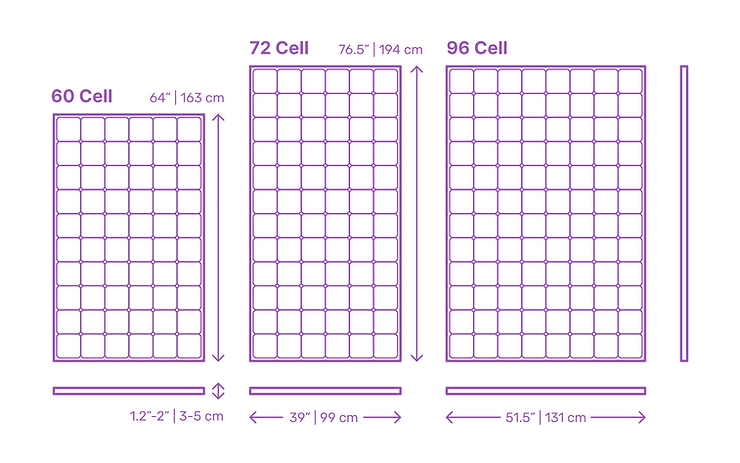
Planning for Solar – Steps to Take
Before you dive into solar, there’s some groundwork to be done. First, assess your energy needs. Take a look at your electricity bills to understand your consumption patterns. Next, evaluate your roof. Is it large enough? Does it face the sun? These are critical questions that will determine the effectiveness of your solar setup.
Then, it’s time to talk to the experts. A professional installer can provide a detailed analysis of your site and recommend the best configuration for your panels. They’ll also navigate the maze of permits and regulations, ensuring that your solar journey is smooth sailing from start to finish.
Finally, gear up for the installation. Clear the area, make any necessary repairs to your roof, and prepare for a small disruption. But don’t worry, it’s a short-term inconvenience for a long-term gain.
Intelligent Integration in Residential Areas
Integrating solar panels into residential areas isn’t just about slapping them onto roofs. It’s about creating a harmonious relationship between the panels and the homes they power. This means considering aesthetics, community guidelines, and the specific energy needs of each household.
Smart integration involves positioning panels to complement the design of your home, not detract from it. It’s about working with the contours of your roof and choosing panels that blend in seamlessly. With REC’s sleek designs, you’re adding to your home’s appeal, not taking away from it.
But it’s not just about looks. It’s about aligning your solar system with your home’s energy consumption. This might mean installing battery storage to capture excess energy or using smart home technology to optimize energy use. It’s about making your home not just solar-powered, but solar-smart.
Investing in Sustainability: Economic and Environmental Impact
Going solar isn’t just a personal win; it’s a victory for the planet. By choosing REC solar panels, you’re joining a movement that’s about more than just saving money – it’s about making a tangible difference in the fight against climate change. And the benefits are clear, both in your pocketbook and in the air we breathe.
Cost-Saving Over the Years
Let’s talk numbers. Solar panels are a long-term investment that pays dividends over time. After the initial setup costs, the savings start rolling in. With REC panels, you can expect a significant reduction in your electricity bills, often enough to recoup your investment in just a few years.
But the savings don’t stop there. With minimal maintenance costs and a lifespan of 25 years or more, your panels will keep on giving. It’s like planting a tree that bears fruit year after year, except this tree is on your roof, and the fruit is cold, hard cash.
REC’s Green Manufacturing Approach
REC isn’t just about producing green energy; they’re about doing it in a green way. Their manufacturing process is designed with sustainability in mind, using renewable energy and water-saving techniques to minimize their environmental footprint.
They also take responsibility for the end-of-life of their products, ensuring that old panels are recycled properly. This cradle-to-grave approach means that when you choose REC, you’re not just buying a product; you’re supporting a philosophy – one that values the health of our planet as much as the health of your bank account.
Warranty and Support: Securing Your Solar Investment
Investing in solar panels is a significant decision, and you want to know that your investment is protected. That’s where warranties and support services come into play. They’re your safety net, ensuring that if anything goes awry, you’re covered. Let’s dive into what REC offers to keep your solar journey worry-free.
The Comprehensive REC Warranty
REC stands behind their products with a robust warranty that’s among the best in the industry. When you invest in REC solar panels, you’re not just getting a promise of performance; you’re getting a guarantee. Their warranty covers product quality, performance, and labor – a trifecta of protection that gives you peace of mind.
Specifically, REC offers up to a 20-year product warranty, which is testament to their confidence in the durability of their panels. Plus, they guarantee that the panels will perform at no less than 92% of their rated power output after 25 years. That’s assurance that your panels will be a powerhouse for a quarter of a century.
Post-Purchase Support and Services
But what happens after you buy? REC’s customer service doesn’t stop at the sale. They offer comprehensive post-purchase support to ensure your solar system operates smoothly. This includes customer service teams ready to answer your questions, and a network of professional partners who can provide maintenance and repair services if needed.
REC also provides online resources to help you understand and monitor your system’s performance. With tools to track your energy production and consumption, you’ll have all the information you need at your fingertips to make the most of your solar investment.
FAQ: Integrated REC Solar Panels
It’s natural to have questions when considering a solar investment. Here are some of the most common queries about REC solar panels:
Do Integrated REC Solar Panels Require Special Care or Maintenance?
REC panels are designed to be low-maintenance. Regular cleaning to remove dust and debris is usually all that’s needed to keep them performing at their best. Of course, it’s always a good idea to have them inspected by a professional every few years to ensure everything is in top shape.
Can REC Solar Panels Be Used in Extreme Weather Conditions?
Yes, REC solar panels are engineered to withstand extreme weather conditions. They’re tested rigorously to perform under high winds, heavy snow loads, and even hail. Their robust build quality means that whether you’re in the heat of the desert or the cold of the mountains, you can rely on REC panels to keep generating clean energy.
So, if you’re looking to make the switch to solar, REC’s integrated panels are a compelling choice. With their advanced technology, robust warranty, and dedicated support, you can harness the sun’s power with confidence, knowing that your investment is secure for years to come.
What Are the Financial Incentives for Installing REC Solar Panels?
When it comes to solar power, the sun isn’t the only thing that’s giving. Many governments and utilities offer financial incentives to encourage homeowners to go solar. These can include tax credits, rebates, and feed-in tariffs that pay you for the excess energy you produce. REC solar panels, with their high efficiency, can help you maximize these incentives.
For instance, in the United States, homeowners can take advantage of the federal solar investment tax credit (ITC), which can significantly reduce the cost of your solar system. Additionally, some states and local utilities offer additional incentives that can further offset the initial investment. It’s like getting a discount on the future of energy.
These incentives not only lower the barrier to entry for going solar but also accelerate the return on your investment. With REC panels, you’re not just saving on your energy bill; you’re potentially earning money back faster thanks to their superior performance.
How Do I Determine the Right Size and Number of Panels Needed?
Choosing the right size and number of solar panels is like fitting together the pieces of a puzzle. It’s about matching your energy needs with the amount of sunlight your location receives. To start, you’ll need to understand your average energy usage, which can be found on your electricity bills. Then, consider the peak sunlight hours in your area – this is the amount of strong sunlight you get in a day, and it’s crucial for calculating your solar needs.
A solar professional can help you crunch these numbers, taking into account factors like roof size and angle, potential shading from trees or buildings, and local weather patterns. They’ll use this data to recommend a system that’s tailored to your specific situation, ensuring that you have enough panels to meet your needs without over-investing in excess capacity.
With REC panels, you can often get away with fewer panels thanks to their high efficiency. This means less roof space taken up and a more aesthetically pleasing setup. It’s about getting the balance just right, and with the right guidance, you’ll have a system that’s the perfect fit for your home.
What Is the Expected Lifespan of REC Solar Panels?
Solar panels are a long-term investment, and you’ll want them to last. REC solar panels are built to endure, with a lifespan that can easily exceed 25 years. Thanks to their high-quality materials and advanced manufacturing processes, these panels are more than capable of standing the test of time.
But it’s not just about the years; it’s about performance over those years. REC guarantees that their panels will retain at least 92% of their original performance after 25 years. This means that even decades down the line, you’ll still be generating a significant amount of clean energy.
Of course, like any piece of technology, solar panels do degrade over time, but REC’s slow degradation rate ensures that this process is gradual, preserving your energy production and your savings for many years to come.
As we wrap up this exploration of integrated REC solar panels, let’s not lose sight of the bigger picture. Choosing to go solar with REC isn’t just a savvy financial move; it’s a step toward a more sustainable and independent future. It’s a commitment to clean energy that benefits not only your household but the entire planet.
By harnessing the power of the sun with REC’s innovative technology, you’re joining a growing community of forward-thinkers who are making a real difference. You’re reducing your carbon footprint, investing in your home’s value, and embracing a future where clean energy is king.
Remember, the journey to a solar-powered home is a marathon, not a sprint. Take your time, do your research, and when you’re ready, the sun will be there, shining down, ready to power your life in ways you never imagined. And with REC solar panels, you’ll be well-equipped to capture every ray of that golden opportunity.

